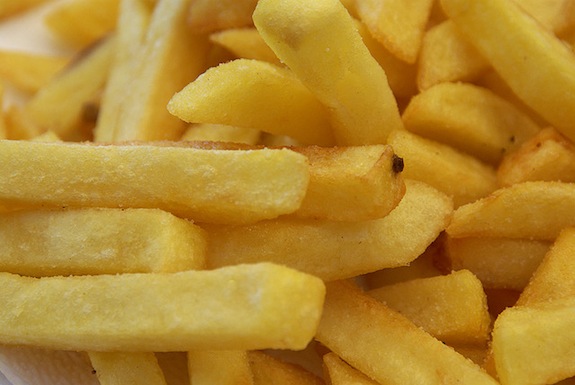We Used To Actually Set Food on Fire to Figure Out How Many Calories It Had
How do they actually figure out how many calories is in a granola bar

Image: Ian Britton
Should you eat this granola bar, or that one? For many, the decision comes down to a number—how many calories said snack has. But how do they actually figure out how many calories is in a granola bar?
Well, for a long time, they burned that granola bar. Today I Found Out writes:
Manufacturers used to measure calories using a “bomb calorimeter”. This process involved placing the food source in a sealed container filled with water. They would then burn the food with electrical energy. After the food had completely burned up, they would measure the water temperature to see how many degrees it was raised and thus how many calories used.
But then the FDA started asking food companies to tell people other things besides calories. Like carbohydrates, fiber and nutrients. That’s hard to measure after you’ve incinerated your food. Now, manufacturers use something call the Atwater system. Here’s Today I Found Out again:
This approach adds up the calories available through the energy containing nutrients in the food item, like protein, carbohydrates, fats, and alcohols. They use standard reference tables for common ingredients based on their energy densities. Things like 4 kilocalories for proteins, 4 for carbohydrates, 3 for organic acids, 9 for fats, and 7 for drinkable alcohols (ethanol). No wonder all that beer gives me this soft belly! It has over 1.5 the calories per mass as proteins and carbohydrates (well worth it though).
Here’s what the bomb calorimeter looks like:
And while we’re at it, where does that 2,000 calorie diet come from? Here’s Marion Nestle, author of Food Politics, on that:
The FDA wanted consumers to be able to compare the amounts of saturated fat and sodium to the maximum amounts recommended for a day’s intake—the Daily Values. Because the allowable limits would vary according to the number of calories consumed, the FDA needed benchmarks for average calorie consumption, even though calorie requirements vary according to body size and other individual characteristics.
From USDA food consumption surveys of that era, the FDA knew that women typically reported consuming 1,600 to 2,200 calories a day, men 2,000 to 3,000, and children 1,800 to 2,500. But stating ranges on food labels would take up too much space and did not seem particularly helpful. The FDA proposed using a single standard of daily calorie intake—2,350 calories per day, based on USDA survey data. The agency requested public comments on this proposal and on alternative figures: 2,000, 2,300, and 2,400 calories per day.
More from Smithsonian.com:
Not All Calories Are the Same, Says Harvard Study
The Culture of Obesity
/https://tf-cmsv2-smithsonianmag-media.s3.amazonaws.com/accounts/headshot/Rose-Eveleth-240.jpg)
/https://tf-cmsv2-smithsonianmag-media.s3.amazonaws.com/accounts/headshot/Rose-Eveleth-240.jpg)